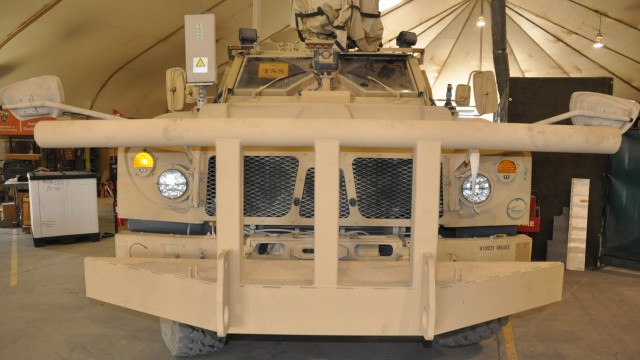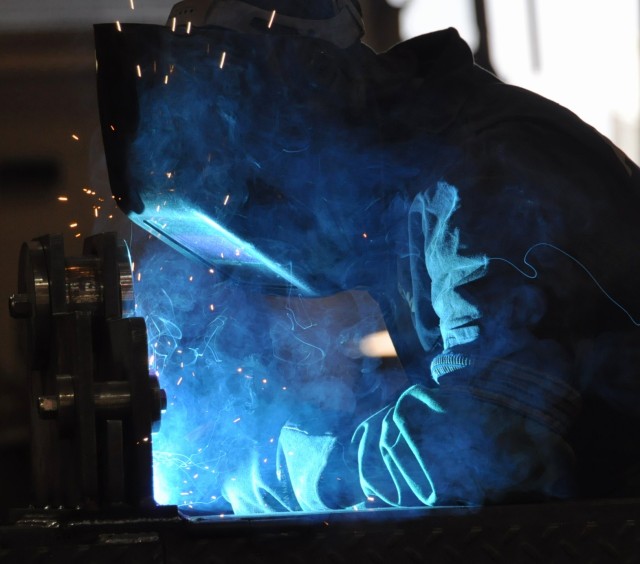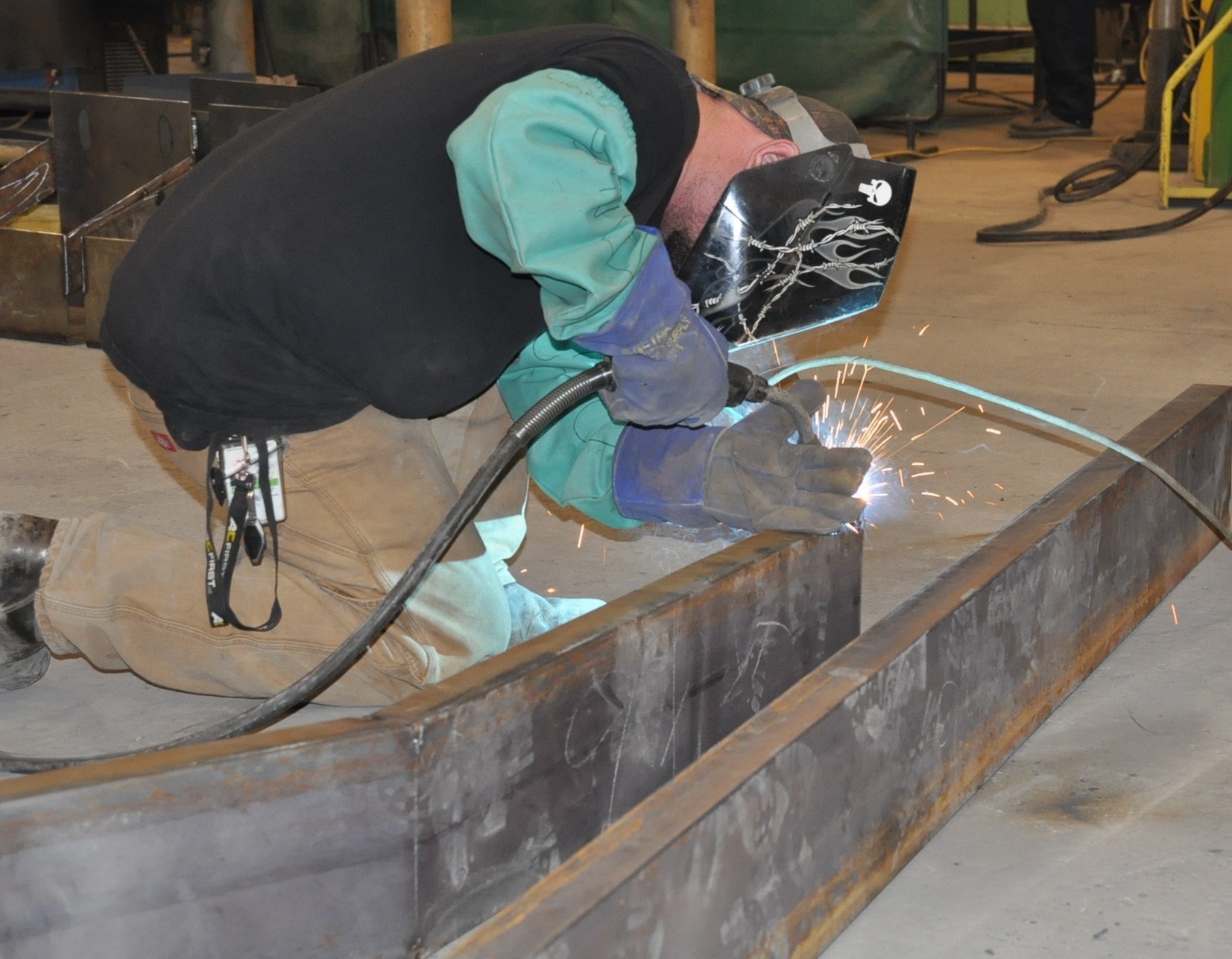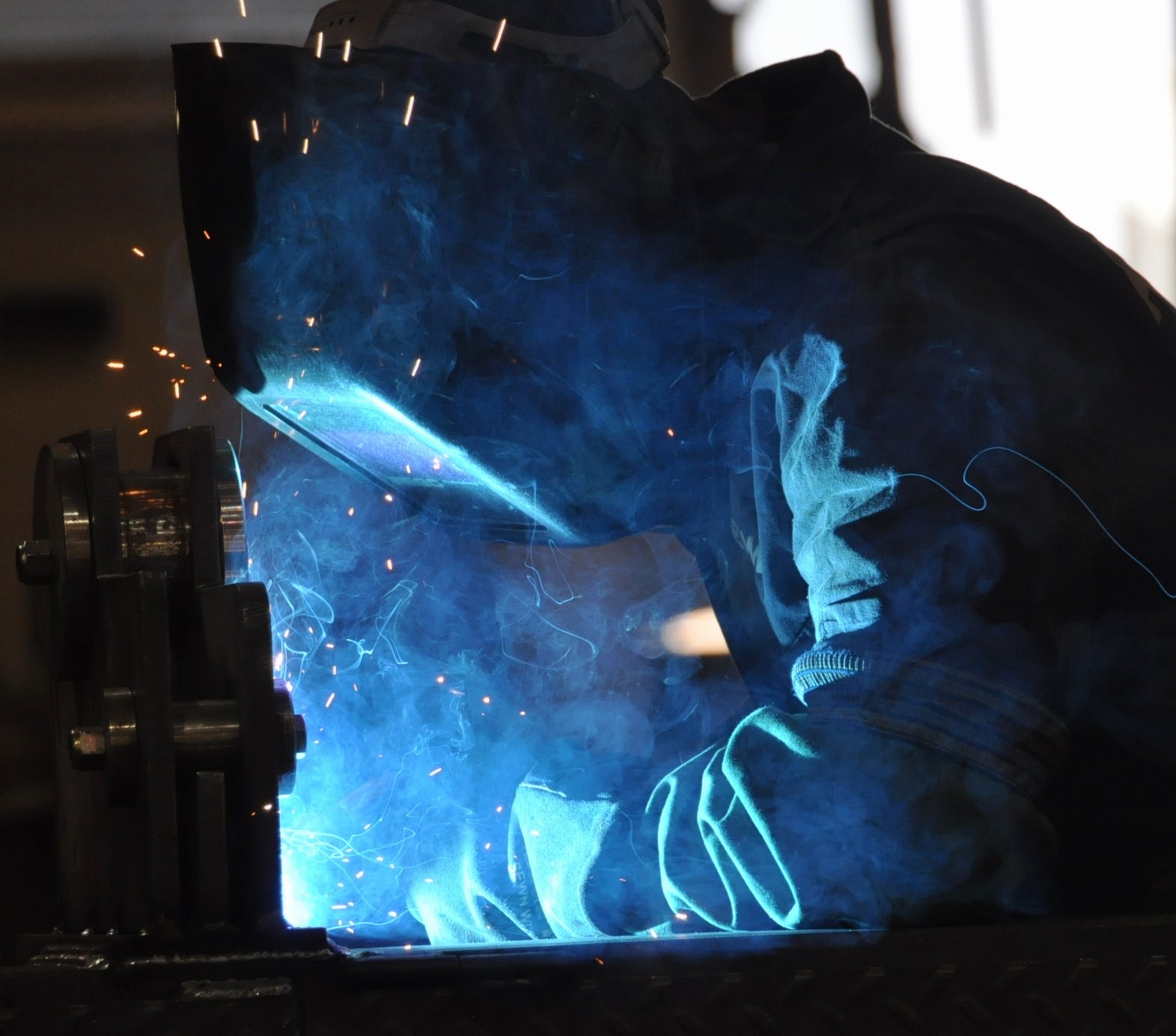FOB FENTY, Afghanistan -- Looking to improve their vehicles' performance, two Soldiers came up with an idea for a new bumper on the Mine-Resistant, Ambushed-Protected all-terrain vehicle. Members of the 426th Brigade Support Battalion, 1st Brigade Combat Team, 101st Airborne Division, named it the "Bastogne bumper" for their 101st forebears who stood fast in the Belgian city during the World War II Battle of the Bulge.
When the commander of the 3rd Battalion, 401st Army Field Support Brigade met Sgt. Shawn Brunney and Staff Sgt. Jason Lawson, they explained the capabilities of the bumper they were trying to create for the M-ATV, and why they felt it was worth the effort to create it.
"The Third Battalion commander told us to come down to Bagram to meet his Allied Trade guys," said Lawson. "He started pushing the project for us."
Brunney agreed with Lawson.
"He was definitely the main driving force to get us down there and working with the Allied Trades section," said Brunney.
Brunney and Lawson developed the first push bumper for use on missions along Main Supply Route California, in particular on Route Stetson - infamous for its steep ravines, hairpin turns and increasing number of insurgents.
"On our routes, we take local-national trucks with us," said Brunney. "They tend to break down, and during engagements we need to be able to move them quickly so everybody can get out of the kill area. And that was the beginning of everything, as to why we started building these bumpers."
Before the bumper was created and perfected, using the M-ATV to push other vehicles was damaging its hood, radiator and other parts.
"It was taking forever to get hoods in, and our vehicles would be deadlined because of the hoods," said Lawson.
This was the beginning of what they called the "Jinga Project."
"So we spent quite a few hours fabricating, figuring out where we could put it, how to attach it, and we found the best possible spot with what we had to work with," explained Brunney.
Brunney and Lawson had the support of their staff Noncommissioned Officer in charge, Staff Sgt. Glenn Alexander, who allowed them the time to work on this project.
"Their main concern was the Soldiers," said Alexander. "I am never going to stop someone from protecting our Soldiers. These are my guys on the road."
Bravo Company's service and recovery team's mission is to convoy fuel, food, water, parts, and metal to other Forward Operating Bases on a route known as main supply route California that runs between FOB Fenty located in Jalalabad and FOB Bostik.
"We ship, we push all of it," said Brunney. "We are a BSB. Logistics is what we do."
AECOM-CACI Field Installation Readiness Support Team's Allied Trades supervisor Brandon Cochran was asked to help the 426th BSB Soldiers take their original push bumper prototype to the perfected bumper now being used by U.S. Army units at FOBs throughout Afghanistan.
There were quite a few obstacles to overcome in developing the bumpers from the original design to the current prototype. Visibility over the bumper was vital to the driver for safety and maneuverability.
The attachment of anti-Rocket-Propelled Grenade netting around the bumper had to be resolved. Soldiers needed access to the hood for engine maintenance and repairs.
The biggest obstacle was where to attach the bumper without affecting the structure of the vehicle or damaging any other parts.
"We came up with a better design that mounts to stronger points so that it would be lifted from the bumper and not damage anything on the vehicle," said Brunney.
The AC FIRST Allied Trades specialists responsible for the improvement from the original design include Christopher Jones, Christopher Parr, Arthur Domschke, Daniel Ashor, Robert Ramirez, Stephen Richard, Blake Dunn and Nagaraju Komara.
"Their hard work, dedication, and drive to create a functional and safe piece of equipment are admirable," said Cochran. "They have placed the warfighters' safety needs in the forefront of all their objectives in getting this task completed."
Dunn, Parr, Komara and Jones were responsible for building the first prototype based on the Soldiers' bumper. Domschke came up with the pipe design and Ashor, Ramirez and Richard, the machinists, created the pins that attach the bumper to the strongest points on the vehicle.
Applying their inventiveness and years of experience working with metal, they completed the final prototype. AC FIRST's Allied Trades personnel plan to complete more than 100 bumpers for FOBs across Afghanistan.
Sgt. 1st Class Shad McCrary, truck master of Alpha Company, 426th BSB, and on his ninth deployment during 18 years of Army service, spoke from experience about the effectiveness of the new bumper.
"I was actually in about a three-hour firefight before the new bumpers were made," said McCrary. "We had the old grill nets and pushed (a truck) without the new bumpers. You could see the nets crumble and break."
"We've had to use those bumpers quite often," said Spc. Adam Tracy, a combat logistics patrol gunner. "I do think they work very well. You know it adds something to the truck. We are able to use it without actually destroying the truck."
"The bumpers are definitely an awesome thing," said Spc. Jeremy Lawson. "I was in a situation where we weren't being engaged but it was a known hot spot. The jingle truck in front of me was up the hill. It stalled and it couldn't get up the hill. So I came right up there and pushed him up the hill. When he came down the hill, he kick-started himself and we continued."
"Staff Sgt. Lawson and Sgt. Brunney have had a bunch of generals and command sergeants major looking at their shop, what they are doing and future projects they are thinking of," explained Alexander. "The nice thing about these guys (Lawson and Brunney) is they don't do it for the recognition. They don't think of themselves. They think of what it can do for everyone. So it is more for the whole Army than it is for the recognition they get."
Due to the strong alliance between 426th BSB and Army Sustainment Command's 401st AFSB, the Bastogne bumpers became a reality for the Soldiers, not just in their own unit, but for other Army units throughout Afghanistan. Creativity, knowledge, tenacity and dedication has saved lives. Proof positive that the Materiel Enterprise is making a difference on the battlefield.






Social Sharing